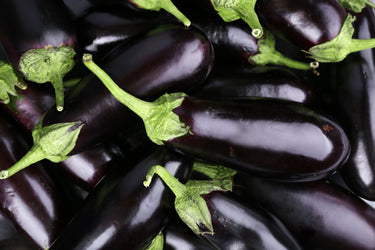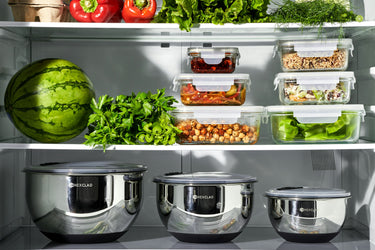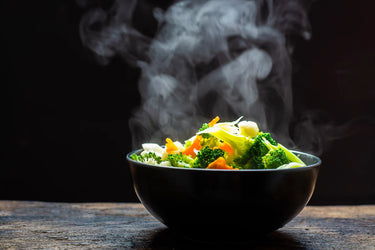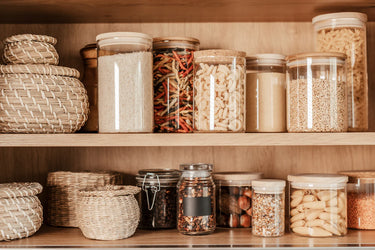8 Purple Vegetables and How To Cook Them

The advice “eat the rainbow” isn’t just about making your plate prettier. Naturally occurring pigments in plants are signs of phytonutrients. These compounds protect humans from chronic disease and potentially protect against cancer and heart disease. Different colors signify different phytonutrients, so red plants like strawberries and tomatoes contain different phytonutrients than green or yellow ones.
Though stocking up on red, orange, yellow, and green fruit and vegetables is easy, blue and purple might seem harder to manage. Thankfully, there are many delicious purple plants to include in your diet. You’ll find purple and deep red hues in an incredible array of fruits like grapes, plums, figs, blueberries, and blackberries, plus 8 varieties of purple vegetables worth trying.
What makes purple vegetables purple?
Anthocyanins are pigments that are responsible for giving purple, blue, and deep red plants their hue. They are part of a larger group of health-promoting, plant-based chemicals called flavonoids, which have an abundance of antioxidant properties. Antioxidants work by destroying free radicals, unstable molecules that damage cells. Though free radicals occur naturally as a by-product of metabolism, they also enter our bodies from exposure to air pollution, alcohol, certain drugs and pesticides, fried foods, tobacco smoke, and UV radiation. Eating an array of plants means you get an array of antioxidants. All the more reason to eat purple vegetables!
You can find anthocyanins in a wide variety of other foods. Black beans, blood oranges, cherries, and pomegranates contain anthocyanins, too. Forbidden rice (aka black rice) is also packed with anthocyanins. It has a delicious, nutty flavor and would taste great paired with the vegetables below.
Do purple vegetables taste different?
Though the color is an exciting change for our eyes, the flavor doesn’t change much when it comes to purple varieties of other vegetables. Choose them for the added health benefit and the vibrant addition to your plate. One exception is purple carrots, which, when eaten raw, tend to taste more peppery and woody than the orange, yellow, or white kinds.
Purple Asparagus
It’s not just prettier than the white and green kind, purple asparagus has about 20% more sugar in its stalks. The interior looks pretty much the same, but it has a nuttier and slightly sweeter flavor than the other varieties. Though the color is different, the method of cooking purple asparagus is the same as with green. Enjoy purple asparagus roasted, broiled, shaved into thin strips, or sauteed.
Eggplant
The skin of eggplants is where all the anthocyanins are concentrated, so if you want to get the antioxidant benefits, don’t peel this versatile vegetable before cooking. Enjoy eggplant roasted, sauteed, or grilled.
Purple Cabbage
Purple cabbage (also called red cabbage) is begging to be made into a gorgeous slaw. Or, use it to make a classic German braised cabbage dish with caraway seeds and apples. Whether you eat it raw or cooked, be aware that the color might leak onto other foods and cooking utensils.
Beets
Not only are red beets packed with anthocyanins, they are rich in folate (vitamin B9), packed with fiber, and rich in potassium. Not all beets are red or purple, you can find them in yellow, golden, and striped versions, too. No matter what color you choose, beets are delicious roasted, steamed, or boiled.
Here’s how to roast beets: trim the stems and scrub well. Poke a few times all over with a fork, wrap in foil, and roast in a 400ºF oven until you can easily insert a knife into the center, around 40 minutes to an hour. Let cool slightly, then use your fingers to slip the skins off. Slice or cut into wedges and serve.
Purple Cauliflower
Heads of jewel-toned purple cauliflower aren’t dyed—they’re rich in the same anthocyanins that lend purple plants their distinctive hues. There’s no difference in flavor between white, orange, and purple cauliflower, so you can cook them all the same way, though the color might leach into other ingredients, meaning it’s better steamed or roasted rather than baked into a cauliflower casserole, for example.
Red Onions
Though often called red onion, the color of this allium is closer to purple or magenta. In addition to high amounts of anthocyanin, red onions are rich in sulfur compounds that help reduce cholesterol and immune-boosting and quercetin. Slice them thinly to add raw to salads, pickle in vinegar for a delicious condiment, or saute them to add flavor to soups, stews, and stir fries.
Purple Carrots
In addition to the eye health-boosting beta carotene carrots are famous for, purple carrots contain the anthocyanin antioxidants that give them their pretty color. As mentioned above, purple carrots are prized for being slightly sweeter than their orange counterparts. Serve them any way you would carrots, though be aware that cooking purple carrots will cause their color to run onto nearby foods.
Purple Sweet Potato
These gorgeous tubers have a violet-colored interior, whether they have white skin (the Okinawa variety) or purple skin (the Stokes variety). Because purple sweet potatoes are denser and drier than the orange and white kind of sweet potatoes, they’re better with moist cooking methods like steaming or boiling (and they take slightly longer to cook, too). Turn them into a mash or bake and top with butter.





